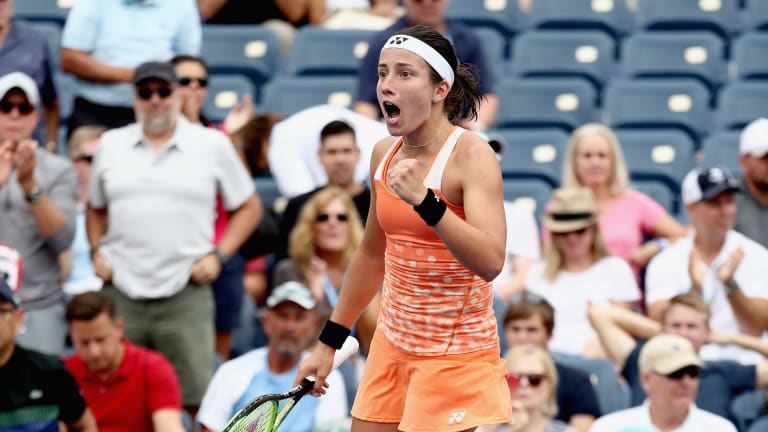WATCH—TC Live previews Serena vs. Venus at the US Open:
Sevastova's knife was too much for Makarova's fork at US Open
By Aug 31, 2018Lifestyle
Holger Rune doubles up on vacation time with epic off-season trips to Dubai, Maldives
By Nov 13, 20242024 WTA Takeaways
Jasmine Paolini, Jessica Pegula, Elena Rybakina, Naomi Osaka: Four big questions
By Nov 13, 20242024 WTA Takeaways
Emma Navarro, Diana Shnaider, Mirra Andreeva: more than youngsters—they're young stars in the making
By Nov 13, 2024ATP Finals
Ailing Carlos Alcaraz overcomes Andrey Rublev at ATP Finals, stays in semifinal contention
By Nov 13, 2024Billie Jean King Cup
First Billie Jean King Cup match in Malaga postponed following severe weather warning
By Nov 13, 2024Betting Central
Pick of the Day: Casper Ruud vs. Alexander Zverev, ATP Finals
By Nov 13, 2024ATP Finals
Jannik Sinner takes Taylor Fritz’s top gear, and finds a higher one, in Turin rematch
By Nov 13, 2024Lifestyle
Andy Murray goes from Centre Court to the stage for a four-stop tour to talk about his tennis career
By Nov 12, 2024Social
"Shocked" Ons Jabeur calls out ITF for canceled tournaments in Monastir, Tunisia
By Nov 12, 2024Sevastova's knife was too much for Makarova's fork at US Open
Published Aug 31, 2018
Advertising
Advertising

Sevastova's knife was too much for Makarova's fork at US Open
© 2018 Getty Images
Advertising

Sevastova's knife was too much for Makarova's fork at US Open